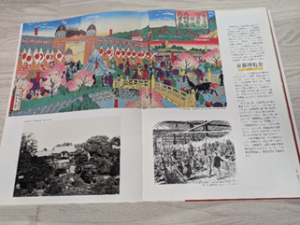Gravity(Attraction) of Kyoto Ⅲ Heian-kyo 1200th Anniversary Published by the Heian-kyo 1200th Anniversary Association
Yoshie Doi
 |
 |
“Heian-kyo 1200 Years” published in 1994 by the Heian-kyo 1200th Anniversary Association
Kyoto people use the term “Heian-kyo kento” (the founding of the capital). Originally, the capital was moved to Heian-kyo, but this shows the characteristics of Kyoto people. The Heian-kyo 1200th Anniversary Commemoration Association was established. In 1994, the 1200th anniversary of the founding of Heian-kyo was celebrated, and the “Heian-kyo 1200th Anniversary Project” was promoted. Construction of a Japanese-style guest house, the Kyoto Concert Hall, and the Kansai Cultural and Academic Research City were among the projects undertaken.
In March 2006, the Heian-kyo 1200th Anniversary Association was dissolved, and in April, the Kyoto Convention Bureau, a public interest incorporated foundation, was established to continue the same philosophy.
100 years ago, the 1100th anniversary of the relocation of the capital to Heian was celebrated with the implementation of industrial promotion measures, such as the excavation of the Lake Biwa Canal, the construction of Japan’s first hydroelectric power plant, and the opening of a streetcar line, marking a major step forward in modernization.
It was the capital of a country for 1074 years, a long period that is unparalleled in the world. The energy of the place called Kyoto has shone for more than a thousand years, and it has functioned as an antenna for Japanese culture.
Heian Shrine was built 100 years ago, and the Jidai Matsuri festival began. The construction of Heian Shrine, which commemorates Emperor Kanmu and the Heian period, in the midst of promoting modernization, seems to represent the will of the people of Kyoto. The townspeople, who rose up in the face of Kyoto’s land subsidence following the relocation of the capital, are said to have danced for three days and three nights in matching yukata robes for each neighborhood during the ground-breaking ceremony for Heian Shrine. They would even show their joy by dancing at business establishments they found on their way home.
I believe that this is a very important point when talking about the history of Kyoto. I believe that the aspirations of the townspeople, also known as the hidden history, are what created Kyoto as the royal castle
Kyo-Suzume hopes to pass on these hidden stories of history and culture and act as a bridge to connect traditional values to the future.
The end of document
Translated by Masami Otani
